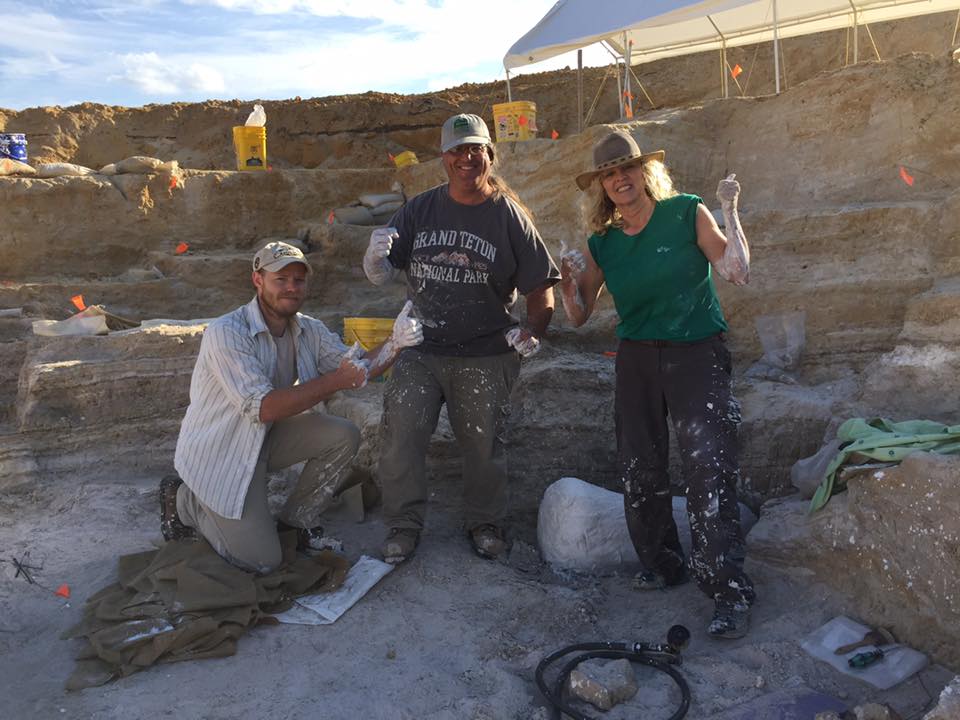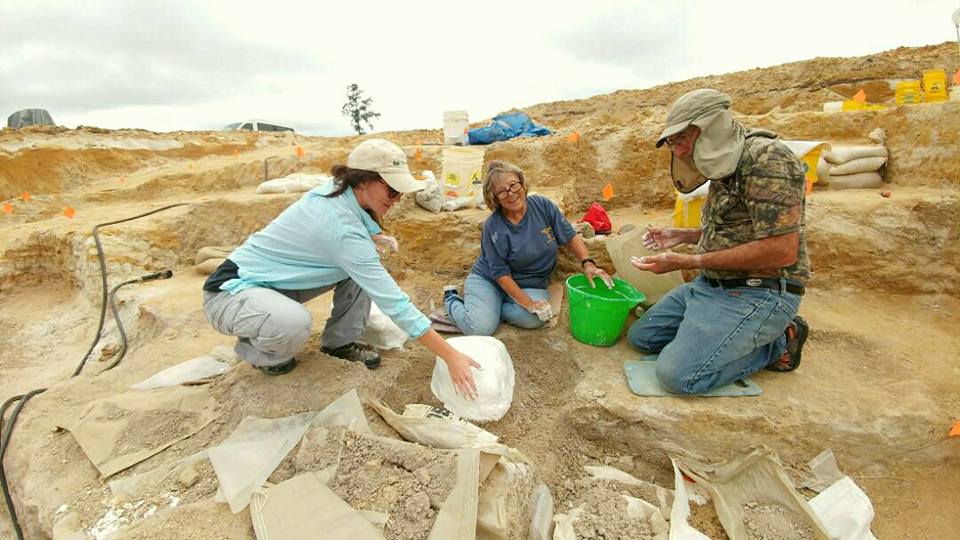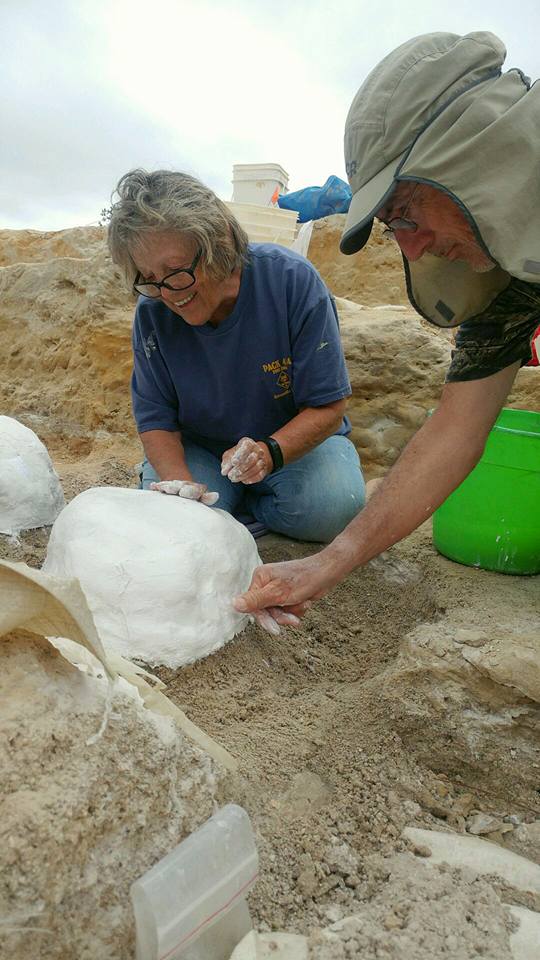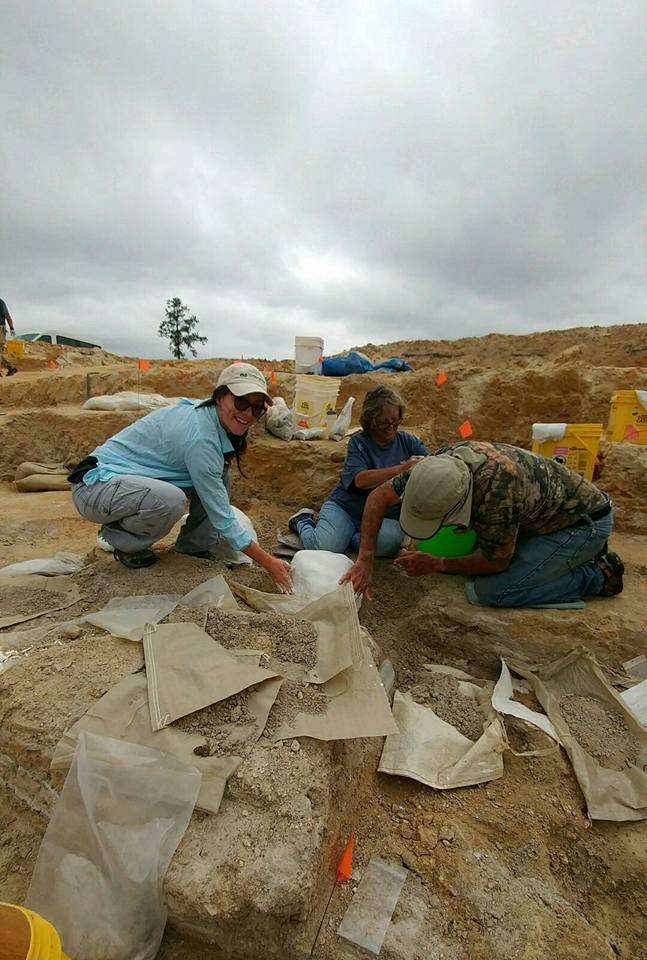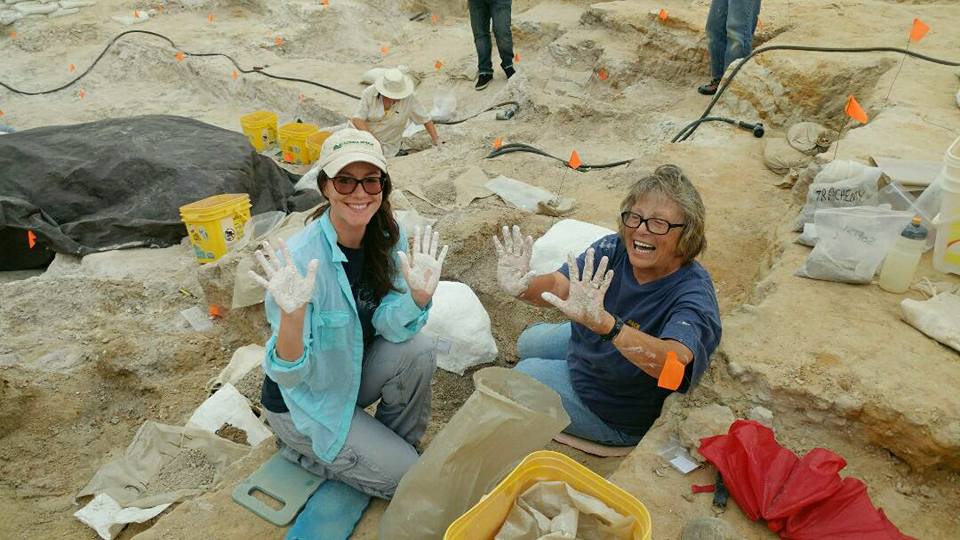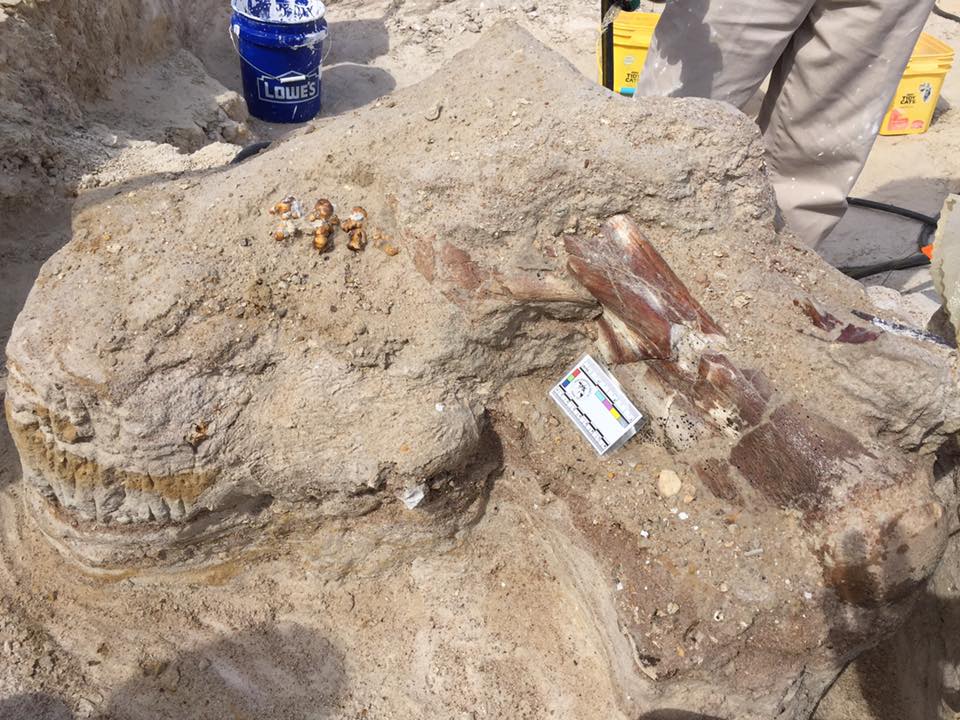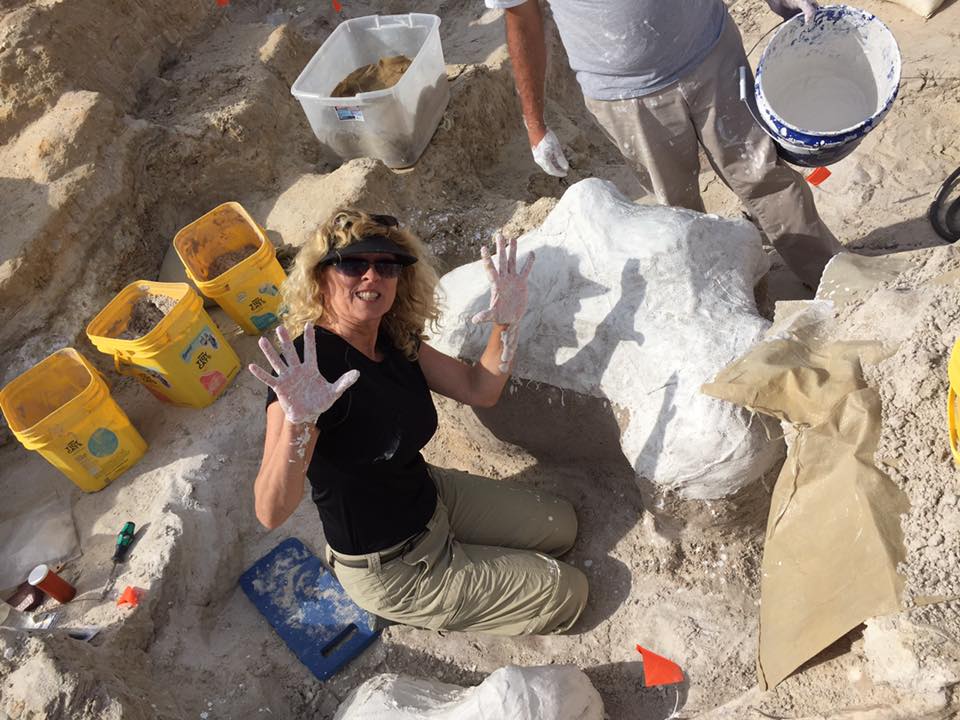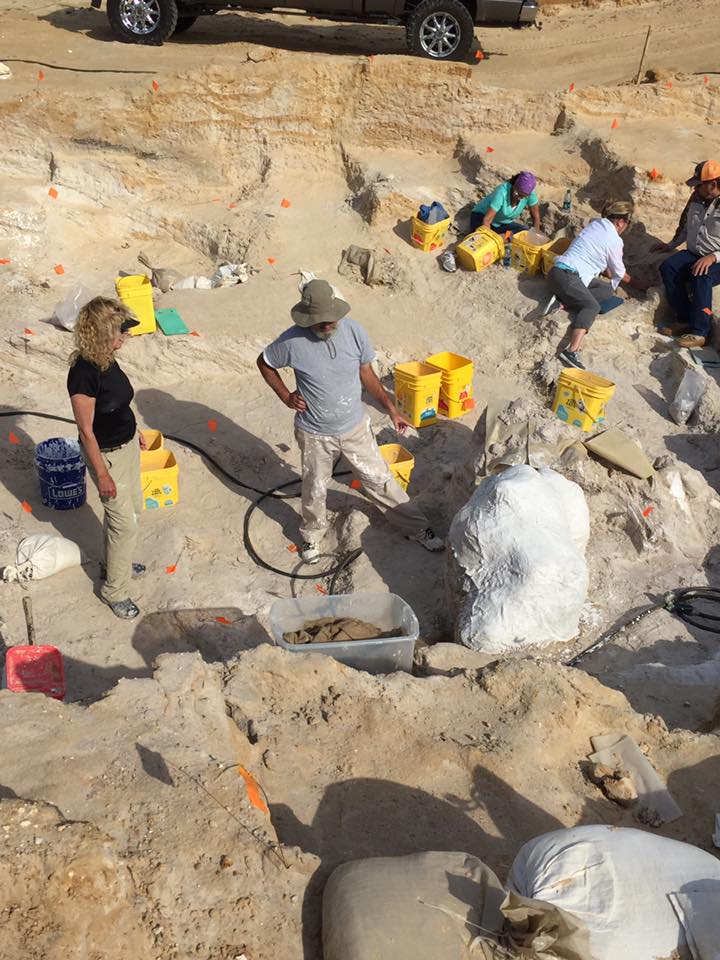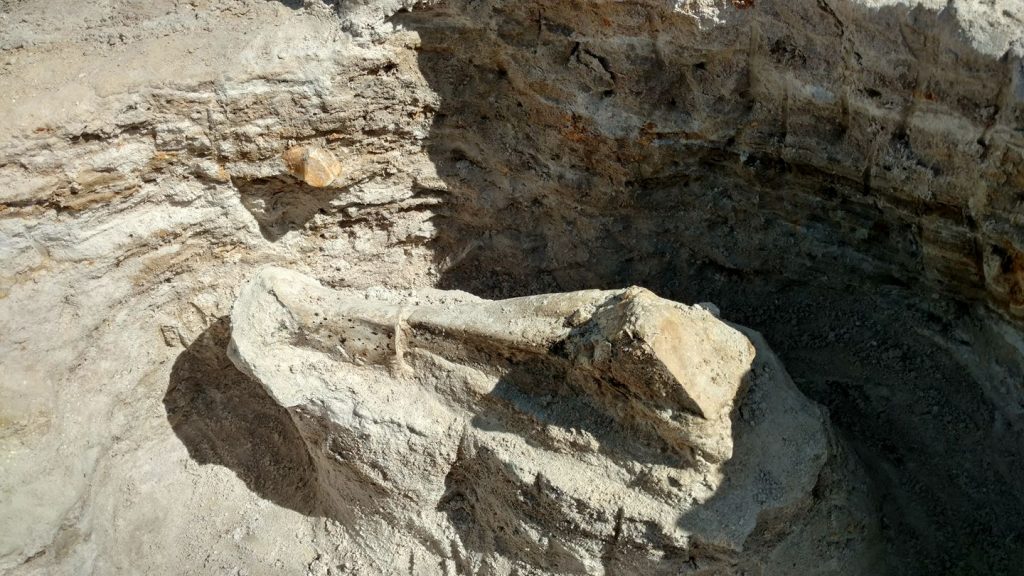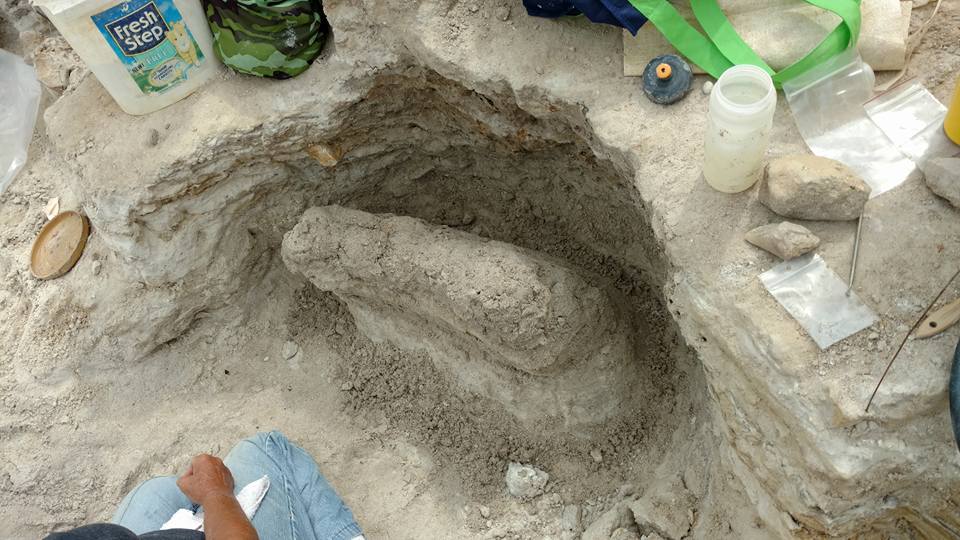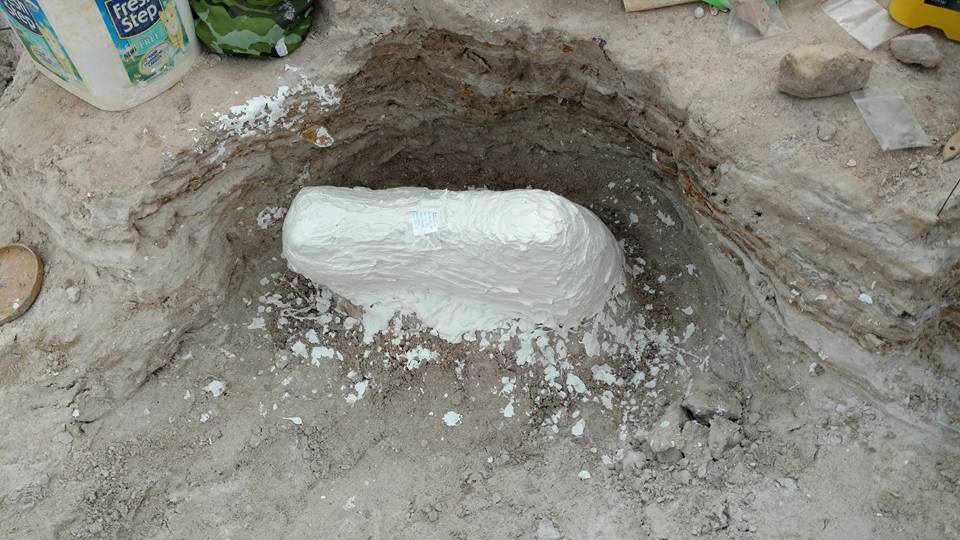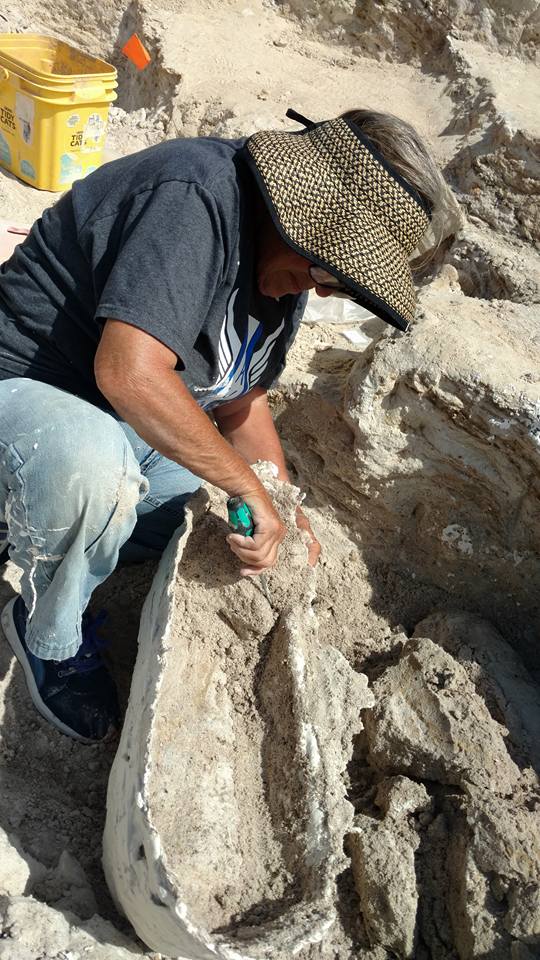We most commonly find isolated fossil elements that are placed in bone bags or vials and brought back to the lab for screenwashing. When we discover complete or nearly complete specimens we create plaster jackets around them for protection during removal and transport. Depending on the size of the specimen, jackets are created using either plaster bandages (what the doctors use to create a cast around a broken bone) or Plaster of Paris mixed with water and strips of burlap.
Once back at the lab, this ‘bowl of matrix and fossils’ is prepared using various tools, such as dental picks, hardened with a special glue, called B-72, and eventually removed from the jacket.
Thursday, March 2nd
Rachel Narducci, Carol Sewell, and Bill Sewell create plaster jackets around two nearly complete Trachemys sp. (slider turtle) shells
Sunday, March 5th
Friday, March 10th
Saturday, March 11th
